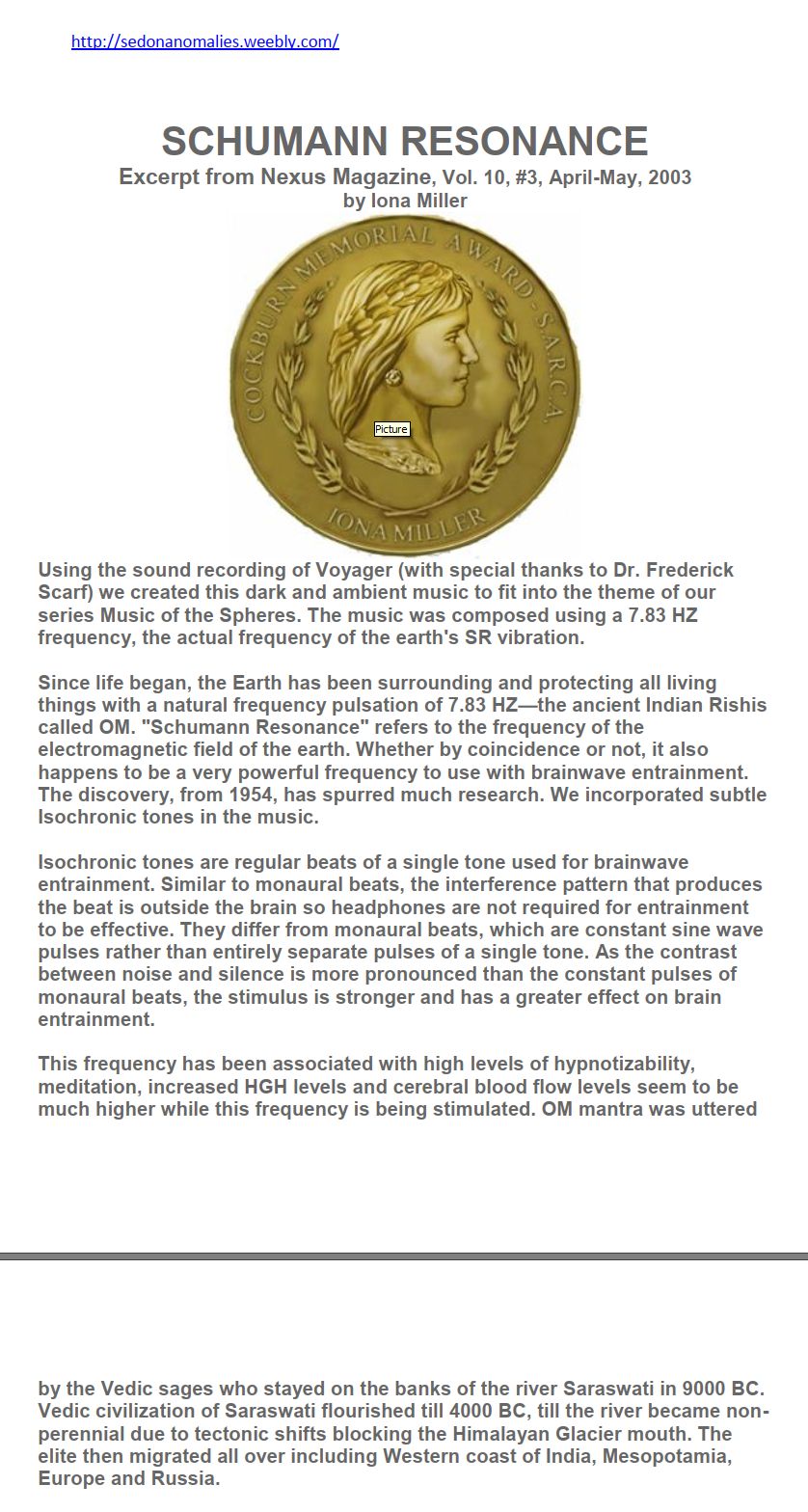Monaural not binaural beat-frequency mixing is found superior

Goodness comes to those who vibrate


In the last decade, many researchers have shown that music sounds are a type of vibration. In terms of expanding their application, stimulation with a suitable vibration can effectively promote relaxation [20], [31]. Therefore, binaural beats (BBs) and monaural beats (MBs) [22] have been proposed to promote relaxation [9], [10], [12]–[14], [21], [27].
Regarding binaural beats, two monotones with a slight difference in frequency between the left and right ears are played at the same time. Therefore, if the left ear receives 250 Hz and the right ear receives 256 Hz sounds, then a 6 Hz frequency difference will presumably be created in the medial nucleus of the superior olivary complex [9], [10], [12], [13], [21].
Regular vibrations of a specific frequency can cause neural oscillations of the corresponding frequency in the brain. Through the process of neural entrainment/synchronization with external rhythms, the activity of neurons can be phase-locked with external stimuli [18], [19], [23], [24].
Because resonance allows very small fluctuations to generate a significant influence, fluctuations similar to brain wave frequencies will cause a certain drive for resonance in the brain waves [23]. Finally, the activity patterns of the neurons in the brain are gradually synchronized with this frequency difference and thus achieve a soothing effect [23], [25]. Both binaural and monaural beat stimulation significantly affected the firing rate of most neurons in the medial temporal lobe [28].
Unlike binaural beats, monaural beats play two monotones with a slight difference in frequency through one speaker. Thus, people can hear the beats, which are perceived as a periodic variation in volume whose rate is the difference in the two frequencies of two monotones, which is similar to amplitude modulation (AM). When stimulations with binaural beats and monaural beats exhibited the same frequency, the effects on relaxation were very similar [26].
However, many studies on the influence of auditory beats have shown that the Auditory Steady-State Response (ASSR) or cortex respond more strongly to monaural beats than binaural beats [24], [29], [30], [32], [34]. A recent study even pointed out that binaural beats entrain the cortex more weakly than monaural beats [24]. Thus, developing a monaural beat designed to promote relaxation would be useful and convenient for people in modern society.
To promote relaxation without interfering with the user’s attention, delivering stimulation sounds at ultralow frequencies that are out of the frequency range for people’s hearing sense is an ideal method. Binaural and monaural stimulation that can generate beats with ultralow frequency are very suitable for promoting relaxation.
However, the difference experienced with binaural sounds can be unpleasant [13], [30], [33]. They may cause auditory rejection and potentially cause dizziness, discomfort, and further anxiety and depression [13], [14]. Thus, delivering comfortable stimulation sounds with ultralow frequency would meet the relaxation needs of modern people.
Since devices for generating ultralow frequencies are very expensive [46], using beats with ultralow frequencies can effectively reduce the cost. However, Pawlaczyk- uszczyńska and Dudarewicz [37] showed that low-frequency ultrasounds at 95–130 dB can cause headache, dizziness, and nausea.
Therefore, to prevent such effects, the energy of the stimulation sound should be much lower than 95 dB. In addition, Jurado and Marquardt [38] showed that stimulation sounds with ultralow frequency, which are out of the frequency range of people’s hearing sense, can still be perceived. Thus, selecting a suitable beat with ultralow frequency can effectively promote relaxation.
PDF of IEEE article — Promoting_Relaxation_Using_Monaural_Beats_With_Ultralow-Frequency_Inaudible_Sounds_An_Empirical_Case_Study
Binaural beats are an auditory illusion perceived when two different pure-tone sine waves, both with frequencies lower than 1500 Hz, with less than a 40 Hz difference between them, are presented to a listener dichotically (one through each ear). This phenomenon was first discovered by Heinrich Wilhelm Dove in 1839. The brain perceives a third tone that is the mathematical difference between the two frequencies. For example, if a 530 Hz pure tone is presented to the right ear and a 520 Hz tone to the left ear, the listener would perceive a 10 Hz binaural beat, which is the difference between the two frequencies.
The effect occurs in the superior olivary complex, an area of the brainstem, where the brain processes the difference between the two frequencies to produce a beat. This beat is not heard in the usual sense since it’s the brain that generates the perception of the beat. The phenomenon requires headphones or earbuds for proper effect, as the tones must not mix outside the ears.
Binaural beats have been the subject of research to determine their potential effects on cognition, stress, anxiety, focus, and meditation, among other states. Different frequencies of binaural beats are purported to entrain brain waves, which may correspond to various states of consciousness, including:
– Delta Waves (1-4 Hz): Associated with deep sleep and relaxation.
– Theta Waves (4-8 Hz): Linked to REM sleep, reduced anxiety, relaxation, as well as meditative and creative states.
– Alpha Waves (8-14 Hz): Involved in relaxation while awake, pre-sleep, and pre-waking drowsiness.
– Beta Waves (14-30 Hz): Associated with normal waking consciousness and heightened alertness, concentration, and cognition.
– Gamma Waves (30-100 Hz): Related to higher mental activity, including perception, problem-solving, and consciousness.
The scientific community remains divided on the efficacy of binaural beats. While some studies suggest that binaural beats can influence the brain and promote various mental states, others find the effects to be minimal or inconclusive. Research into binaural beats continues, with studies exploring their potential for improving mental health, enhancing cognitive function, aiding sleep, and facilitating deeper states of meditation.
While many people report positive effects from using binaural beats, such as improved focus, relaxation, or sleep quality, individual experiences may vary. It is also important to note that binaural beats are not a replacement for professional medical treatment where appropriate. Individuals with epilepsy or other neurological conditions are advised to consult with a healthcare provider before using binaural beats, as certain frequencies could potentially trigger seizures or other adverse effects.
Schumann resonance (7.83 Hz) binaurally-encoded onto 40 Hz carrier: Left channel 36.085 Hz, Right channel 43.915 Hz, MP3 format
DOWNLOAD — https://soundquality.org/wp-content/uploads/2023/12/40HzCenter-binaural-36_08543_915.mp3
Schumann resonance (7.83 Hz) binaurally-encoded onto 40 Hz carrier: Left channel 36.085 Hz, Right channel 43.915 Hz, OGG VORBIS format
DOWNLOAD — https://soundquality.org/wp-content/uploads/2023/12/40HzCenter-binaural-36_08543_915.ogg
Schumann resonance (7.83 Hz) monaurally-encoded onto 40 Hz carrier: Left channel 36.085 Hz, Right channel 43.915 Hz, MP3 format
DOWNLOAD — https://soundquality.org/wp-content/uploads/2023/12/40HzCenter-monaural-36_08543_915.mp3
Schumann resonance (7.83 Hz) monaurally-encoded onto 40 Hz carrier: Left channel 36.085 Hz, Right channel 43.915 Hz, OGG VORBIS format
DOWNLOAD — https://soundquality.org/wp-content/uploads/2023/12/40HzCenter-monaural-36_08543_915.ogg
See also Eileen McKusick, tuning forks — It is highly interesting to note that Eileen’s self-described methodology is to ‘ring the forks at some distance from the body, then pull them together, to the central axis of the body, its energy vortex’. This is clinical evidence supporting the ‘monaural is superior to binaural’ claim explored in the research above. Each ‘Schumann resonance / 7.83 Hz difference-in-frequency’ pair of tuning forks she uses, therefore essentially approximates initially a “binaural” nodality (i.e., lower-frequency fork ringing on one side of the body; higher-frequency fork ringing on other side of the body) but is then moved into “monaural” nodality (i.e., both forks together, directly centered at body axis).
‘Breaking-up and pulling the energetic back to the center’
Eileen describes her technique and modality at around 24:42 into this video:
https://www.bitchute.com/video/lTdmsczkpGt7
See also this video for specific information about the Schumann resonance tuning forks she produces:
One fork 54.81 Hz (7 x 7.83 Hz); second fork 62.64 Hz (8 x 7.83 Hz); frequency-difference / beat-frequency between two forks is 7.83 Hz
7.83 Hz ‘earth resonance’ discovered by Schumann is at Alpha-Theta cusp: relaxation, connectedness.
https://en.wikipedia.org/wiki/Schumann_resonances
Dramatic sonic input:

See also the other excellent videos
Dr. Kaufman: How to Tune Your Body – Eileen Day McKusick
Walking Human Batteries – Tesla Technology w/ Eileen McKusick (1of2)
Walking Human Batteries – Tesla Technology w/ Eileen McKusick (2of2)
Tuning the human bio-field in a world driven by cartunes (with Eileen McKusick)
Eileen McKusick – Human Bioelectricity
Eileen Day McKusick | Electro-Sonic Health & Human Biofield Tuning
Eileen Day McKusick | Healthy Bioplasma, Our Electric Body & The Great Tuning Of The Ages
Conversations with Dr. Cowan & Friends| Ep 37: Eileen McKusick
Eileen Day McKusick – Raise Your Biofield Voltage!
Eileen Day McKusick | Biofield Tuning, The Electric Universe, & Ether Physics
#46 Focus on Sound Healing_1 Eileen McKusick, biofield tuning, sound healer
Secrets of Electric Health: The Ring of Truth – with Eileen McKusick
Dr Andrew Kaufman ft Eileen Day McKusick ‘Biofield Tuning’: The Sound of Healing! [17.07.2022]
Eileen Day McKusick ‘Biofield Tuning’: Who and what is she? (Links below) [20.07.2022]
Tuning the Biofield – Eileen McKusick & Alfa Vedic | Mirror
Eileen McKusick | Biofield Tuning & Sonic Alchemy: Concordiam a Dissonantia Per Vocem
Ep 5: The Human Biofield with Eileen McKusick
Human Bioelectricity and the EU Model: Eileen McKusick EU2017
Alfa Vedic – Tuning The Biofield w/ Eileen Day McKusick [Dr. Barre Paul Lando] [Mike Winner] [#149]
#278 ELECTRIC BODY – EILEEN DAY McKUSICK | Being Human
“I sing the body electric, the armies of those I love engirth me and I engirth them…” – Walt Whitman
http://www.globaldialoguefoundation.org/files/THESEDONAEFFECT.pdf
Local mirror PDF — https://soundquality.org/wp-content/uploads/2023/12/THESEDONAEFFECT.pdf